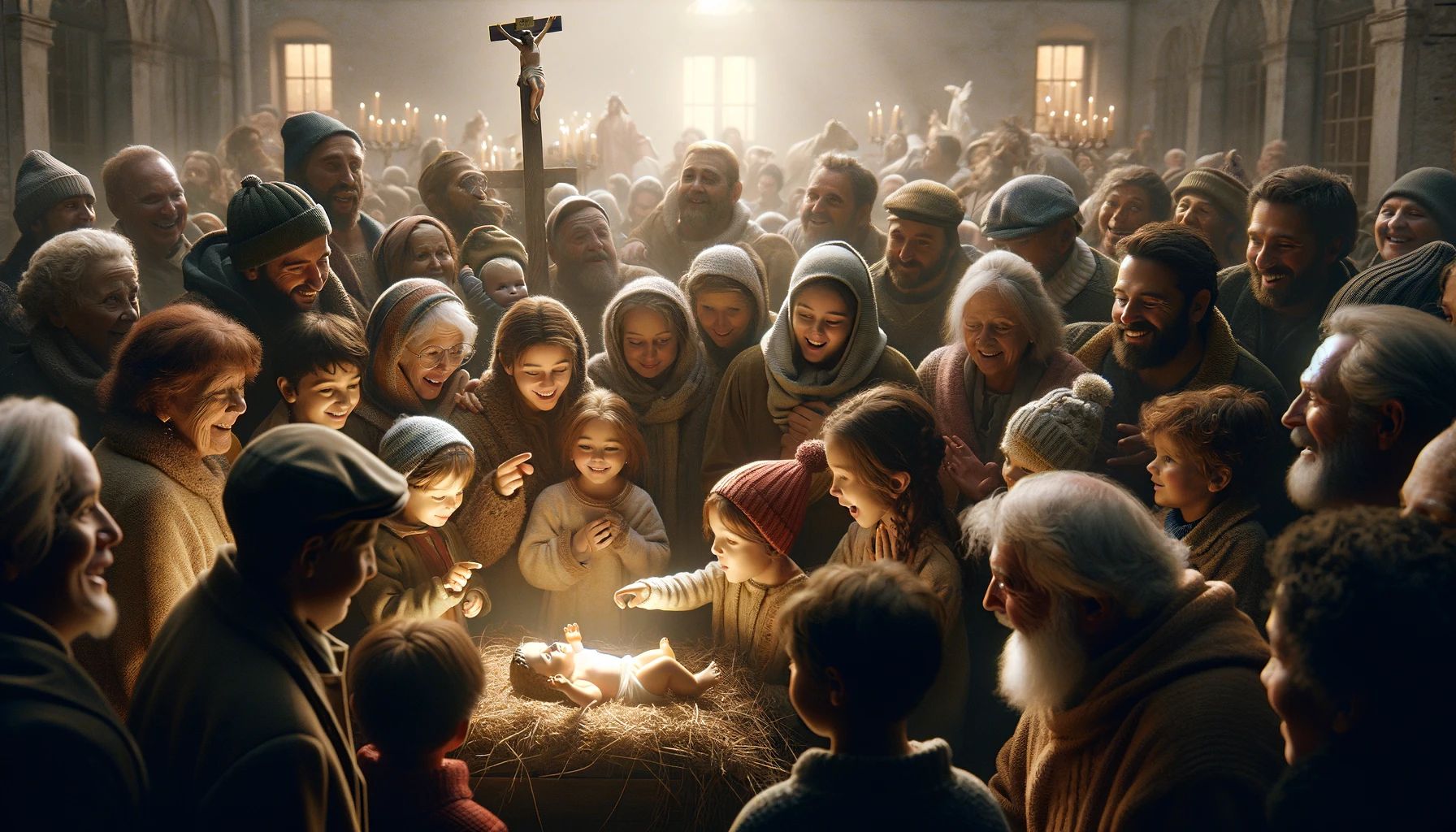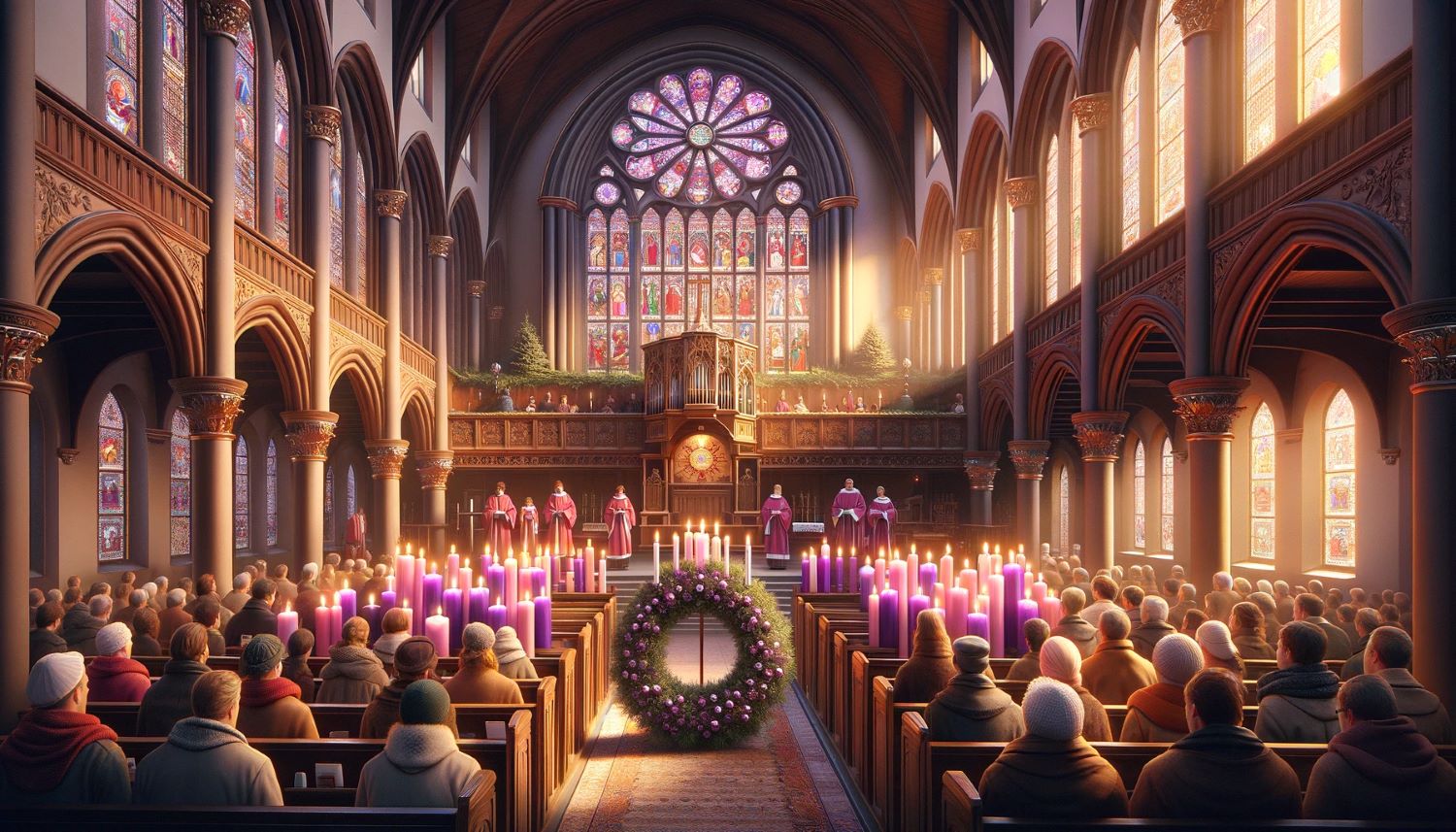Home>Special Themes>When Is The Last Sunday Before Advent


Special Themes
When Is The Last Sunday Before Advent
Published: February 12, 2024
Ericka Andersen, an editor at Christian.net, expertly merges digital strategy with content creation, focusing on faith and societal issues. Her communication skills enhance the platform's engaging narratives, fostering meaningful dialogue on belief's impact on society.
Discover the significance of the last Sunday before Advent and its special themes. Learn about the traditions and observances associated with this important day.
(Many of the links in this article redirect to a specific reviewed product. Your purchase of these products through affiliate links helps to generate commission for Christian.net, at no extra cost. Learn more)
Table of Contents
Introduction
The last Sunday before Advent holds a special place in the hearts of many Christians around the world. It marks the transition from the liturgical year to the season of Advent, a time of anticipation and preparation for the celebration of the birth of Jesus Christ. This significant Sunday, also known as "Stir-up Sunday" in some traditions, carries deep historical and cultural significance, making it a cherished and meaningful observance for many.
As the days grow shorter and the air becomes crisper, the last Sunday before Advent serves as a poignant reminder of the cyclical nature of time and the spiritual journey of believers. It heralds the imminent arrival of a period of reflection, hope, and spiritual renewal, inviting individuals to embark on a profound inward journey as they await the joyous arrival of Christmas.
The last Sunday before Advent also serves as a bridge between the past and the future, symbolizing the transition from the completion of one year to the hopeful anticipation of the next. It encapsulates the essence of continuity and renewal, inviting individuals to reflect on the passage of time and the enduring message of faith, love, and redemption.
This article delves into the rich history and traditions surrounding the last Sunday before Advent, shedding light on its cultural, religious, and symbolic significance. By exploring the origins of Advent, the process of determining its date, and the customs associated with this special Sunday, readers will gain a deeper understanding of the profound meaning embedded within this timeless observance. Let us embark on a captivating journey through time and tradition, unraveling the tapestry of beliefs and practices that have woven the last Sunday before Advent into the fabric of religious and cultural heritage.
Read more: When Is The First Sunday In Advent
The History of Advent
The history of Advent traces its roots back to the early centuries of Christianity, encompassing a rich tapestry of religious, cultural, and historical influences. The word "Advent" originates from the Latin word "adventus," meaning "arrival" or "coming," signifying the anticipation of the arrival of Jesus Christ. The origins of Advent can be linked to the practices of early Christians who sought to prepare for the celebration of the birth of Christ through a period of fasting, prayer, and reflection.
The earliest recorded observance of Advent dates back to the 4th and 5th centuries in Gaul (modern-day France), where Christians engaged in a period of fasting and spiritual preparation leading up to the feast of Epiphany. Over time, the observance of Advent evolved, with the focus shifting towards the anticipation of Christmas, the birth of Jesus Christ.
By the 6th century, the observance of Advent had spread to other regions, including Spain and Italy, each incorporating unique customs and traditions into the observance. The duration of Advent varied, with some communities observing a fast of up to six weeks, while others observed a shorter period leading up to Christmas.
The structure of Advent as a four-week period began to take shape in the 6th century when the Council of Tours in 567 established the practice of fasting during the weeks leading up to Christmas. This marked a significant milestone in the formalization of Advent as a distinct liturgical season within the Christian calendar.
Throughout the medieval period, the observance of Advent continued to evolve, with the introduction of Advent wreaths, the use of Advent calendars, and the incorporation of hymns and prayers specific to the season. The symbolism of Advent, represented by the lighting of candles and the themes of hope, peace, joy, and love, became deeply entrenched in Christian tradition, enriching the spiritual significance of the season.
In the 20th century, the Second Vatican Council further solidified the observance of Advent within the Roman Catholic Church, emphasizing the themes of spiritual preparation, anticipation, and joyful expectation. Today, Advent stands as a cherished and integral part of the liturgical year, inviting believers to embark on a journey of spiritual renewal and hopeful anticipation as they prepare to celebrate the birth of Jesus Christ.
The history of Advent reflects the enduring legacy of faith, tradition, and cultural heritage, weaving together centuries of beliefs and practices into a vibrant tapestry of spiritual significance and meaning.
Determining the Date of Advent
The date of Advent, particularly the first day of Advent, holds a pivotal place in the liturgical calendar, setting the stage for the season of anticipation and spiritual preparation leading up to Christmas. Unlike fixed-date celebrations such as Christmas Day, the date of Advent varies each year, adding an element of dynamism and anticipation to its observance.
Advent always begins on the fourth Sunday before Christmas Day, which means its starting date fluctuates between November 27th and December 3rd. This variability is due to the intricacies of the ecclesiastical calendar, which is based on the lunar-solar cycle and the determination of the date of Easter, a moveable feast in the Christian calendar.
The method for calculating the date of Advent is rooted in the ancient tradition of determining the date of Easter, which itself is based on the vernal equinox and the phases of the moon. The Council of Tours in 567 established the principle of beginning the liturgical year on the first Sunday of Advent, underscoring the significance of this season as a period of spiritual renewal and joyful anticipation.
To calculate the date of Advent, one must first identify the date of Christmas Day, which is fixed on December 25th. Working backward, the fourth Sunday before Christmas is designated as the start of Advent. This approach ensures that Advent always encompasses four Sundays, maintaining its distinct character as a four-week season of preparation and expectation.
The dynamic nature of the Advent season, with its shifting start date, serves as a poignant reminder of the cyclical nature of time and the ever-changing rhythms of the liturgical year. It invites believers to embrace the fluidity of the ecclesiastical calendar, fostering a sense of anticipation and readiness for the spiritual journey that lies ahead.
The determination of the date of Advent encapsulates the essence of continuity and renewal, symbolizing the cyclical nature of the Christian faith and the enduring message of hope and salvation. As believers embark on this annual journey of spiritual preparation, the fluctuating date of Advent serves as a poignant reminder of the timeless significance of this sacred season.
The date of Advent, with its calculated variability, underscores the profound connection between the passage of time and the spiritual journey of believers, inviting them to embark on a period of reflection, anticipation, and joyful expectation as they prepare to celebrate the birth of Jesus Christ.
The Significance of the Last Sunday Before Advent
The last Sunday before Advent holds profound significance within the Christian calendar, serving as a poignant juncture that marks the culmination of one liturgical year and the imminent commencement of the season of Advent. This transitional Sunday, often referred to as "Stir-up Sunday" in some traditions, carries deep spiritual, cultural, and symbolic importance, resonating with themes of reflection, preparation, and hopeful anticipation.
As the final Sunday of the liturgical year, this observance offers a moment of introspection and contemplation, prompting believers to reflect on the passage of time and the spiritual journey that has unfolded throughout the year. It provides an opportunity for individuals to review their faith, assess their spiritual growth, and express gratitude for the blessings and challenges encountered along the way.
The last Sunday before Advent also serves as a symbolic threshold, signaling the imminent arrival of a season characterized by themes of hope, joy, and anticipation. It encapsulates the essence of transition and renewal, inviting individuals to embrace the promise of a new beginning as they prepare to embark on the spiritual journey of Advent.
Furthermore, the last Sunday before Advent holds cultural significance, as it is often associated with the tradition of preparing Christmas puddings and other festive treats. In some households, families gather to stir the ingredients of Christmas puddings while making a wish, infusing this observance with a sense of communal joy and anticipation for the upcoming festivities.
From a spiritual perspective, the last Sunday before Advent serves as a reminder of the cyclical nature of time and the enduring message of faith, love, and redemption. It beckons believers to embrace the timeless themes of renewal and anticipation, fostering a sense of spiritual readiness for the arrival of Christmas and the celebration of the birth of Jesus Christ.
In essence, the last Sunday before Advent stands as a bridge between the completion of one year and the hopeful anticipation of the next, symbolizing the continuity of faith and the enduring promise of redemption. It invites individuals to embrace the transformative power of hope and anticipation, preparing their hearts and minds for the joyous arrival of Christmas and the profound message of love and salvation it embodies.
The significance of the last Sunday before Advent resonates deeply with believers, offering a moment of reflection, anticipation, and spiritual renewal as they prepare to embark on the sacred journey of Advent and celebrate the timeless message of hope and redemption.
Traditions and Celebrations
The last Sunday before Advent is steeped in rich traditions and joyful celebrations that reflect the profound significance of this transitional observance. Across various Christian denominations and cultural contexts, this special Sunday is marked by a tapestry of customs and rituals that honor the themes of reflection, preparation, and hopeful anticipation.
One of the most cherished traditions associated with the last Sunday before Advent is the custom of preparing Christmas puddings. In many households, families gather to mix the ingredients of Christmas puddings while making a wish, infusing this culinary tradition with a sense of communal joy and anticipation for the upcoming festivities. The act of stirring the pudding mixture, often accompanied by prayers or lighthearted wishes, symbolizes the unity of family and the shared anticipation of the Christmas season.
In addition to the preparation of Christmas puddings, the last Sunday before Advent is also a time when many communities engage in the tradition of lighting the first candle on the Advent wreath. This symbolic act marks the beginning of the Advent season, with the first candle typically representing the theme of hope. Families and congregations gather to participate in this ritual, kindling the flame of the first candle and embracing the spirit of anticipation and spiritual preparation that defines the Advent season.
Furthermore, musical traditions play a significant role in the observance of the last Sunday before Advent. Many churches and communities hold special choral performances or musical recitals that celebrate the themes of hope, joy, and anticipation. These musical expressions serve as a poignant reminder of the profound spiritual significance of the season, uplifting the hearts and minds of believers as they prepare to embark on the journey of Advent.
The last Sunday before Advent also provides an opportunity for individuals and communities to engage in acts of charitable giving and service. In keeping with the spirit of anticipation and preparation, many organizations and faith-based groups organize initiatives to support those in need, fostering a sense of compassion and generosity that aligns with the core values of the Advent season.
As the day draws to a close, many families and communities gather for shared meals and fellowship, savoring the warmth of togetherness and the anticipation of the upcoming Christmas celebrations. This communal gathering serves as a poignant reminder of the enduring traditions and the timeless message of faith, love, and hope that unite individuals during this sacred season.
In essence, the traditions and celebrations associated with the last Sunday before Advent encapsulate the essence of unity, anticipation, and spiritual preparation, fostering a sense of communal joy and reflection as believers prepare to embark on the sacred journey of Advent and celebrate the timeless message of hope and redemption.
Read more: What Are The 4 Sundays Of Advent Called?
Conclusion
The last Sunday before Advent stands as a poignant juncture that bridges the completion of one liturgical year with the hopeful anticipation of the next. This transitional observance, often referred to as "Stir-up Sunday," carries profound spiritual, cultural, and symbolic significance, resonating with themes of reflection, preparation, and joyful expectation. As families gather to stir Christmas puddings, light the first candle on the Advent wreath, and engage in acts of charitable giving, the air is filled with a sense of communal joy and anticipation for the upcoming festivities.
The rich history of Advent, rooted in the early centuries of Christianity, reflects the enduring legacy of faith, tradition, and cultural heritage. From its origins as a period of fasting and spiritual preparation to its evolution into a season of joyful anticipation, Advent has woven together centuries of beliefs and practices into a vibrant tapestry of spiritual significance and meaning.
The determination of the date of Advent, based on the fluctuating date of Christmas Day, underscores the dynamic nature of the ecclesiastical calendar, inviting believers to embrace the fluidity of time and the cyclical rhythms of the liturgical year. This calculated variability serves as a poignant reminder of the enduring message of hope and salvation, fostering a sense of anticipation and readiness for the spiritual journey that lies ahead.
The last Sunday before Advent holds profound significance within the Christian calendar, offering a moment of introspection and contemplation as believers reflect on the passage of time and the spiritual journey of the year. It symbolizes the continuity of faith and the enduring promise of redemption, inviting individuals to embrace the transformative power of hope and anticipation as they prepare to celebrate the birth of Jesus Christ.
As families and communities engage in cherished traditions and celebrations, from stirring Christmas puddings to lighting the first candle on the Advent wreath, the air is filled with a sense of communal joy and anticipation for the upcoming festivities. These rituals serve as poignant reminders of the enduring traditions and the timeless message of faith, love, and hope that unite individuals during this sacred season.
In essence, the last Sunday before Advent encapsulates the essence of unity, anticipation, and spiritual preparation, fostering a sense of communal joy and reflection as believers prepare to embark on the sacred journey of Advent and celebrate the timeless message of hope and redemption.














